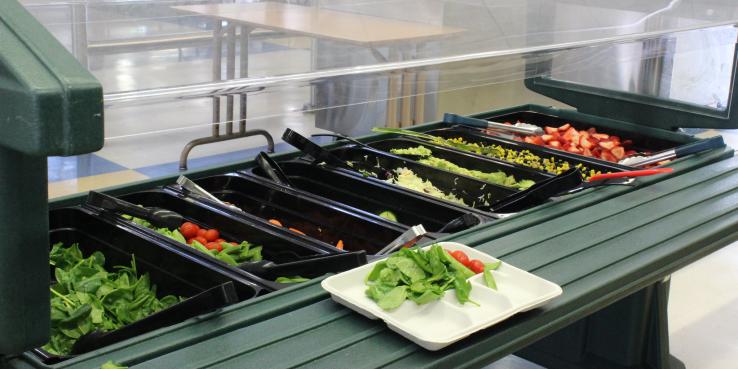Every year the San Francisco Unified School District (SFUSD) spends more than $12 million buying food to serve nearly 55,000 students. And in 2016, the school board decided the district should spend this money in alignment with its values by adopting the Good Food Purchasing Policy (GFPP). Five years later, it’s clear that the board’s decision, implemented by forward-thinking food service leadership, has put the district on a new path when it comes to food procurement.
The GFPP outlines a set of standards for food purchasing and is based on five core values: local economies, health, valued workforce, environmental sustainability and animal welfare. To gain a Good Food Provider seal, an institution must meet the GFPP minimum baseline in all five categories. The standards are metric-based and set up to encourage continual improvement, with higher standards phased in over time. Improvements are measured in comparison to an initial assessment. SFUSD released its baseline assessment of the 2017–18 school year in 2019 and outlined plans for improvement at a SPUR forum that year.
In school year 2017–18, SFUSD met the baseline requirements in local economies and nutrition and has continued to improve in these categories. Since then, the district has also met the baseline requirements in two additional value categories: valued workforce and animal welfare.
Here’s what the has district accomplished so far:
- Nearly doubled purchases of environmentally sustainable food, moving from spending less than $100,000 annually on qualifying products in 2017–18 to nearly $180,000 in 2019-2020.
- More than quadrupled animal welfare certified food purchases between 2017–18 and 2019–20 by spending nearly $275,000 on qualifying foods.
- Increased purchases of animal products raised without the use of antibiotics by 6%, an additional $90,000, between 2018–19 and 2019–20. All poultry products served in school cafeterias are now raised without the use of antibiotics.
- Spent nearly $1,000,000 in 2019–20 on fair food, which provides safe and healthy working conditions and fair compensation for food industry workers, an increase of over $750,000 from the 2017–19 school year.
- Increased purchases of fresh fruit and whole grains by 12% between 2018–19 and 2019-20.
Together these changes in food procurement mean more than one million additional dollars transitioned to supporting a healthy, local, sustainable and fair food supply chain, which helps build demand for better food.
While the district also planned to meet the environmental sustainability baseline in school year 2019–20, supply-chain disruptions slowed progress. In the past, the district was able to buy Straus Family Creamery bulk organic milk and Fork in the Road hot dogs made with pasture-raised beef to support both environmental sustainability and animal welfare. While ongoing supply-chain challenges make the future uncertain, the district plans to bring these products back; continue their purchase of organic, non-GMO, pasture-raised beef from Mindful Meats; and increase organic produce purchases to meet their goals.
The success of San Francisco Unified in setting and meeting their procurement goals sets a solid example for other institutions implementing GFPP and provides a roadmap for additional institutions to follow their lead. In summer 2020, San Francisco hospitals and jails completed GFPP baseline assessments and action plans for improvement. Their updated annual assessments should be complete by the middle of 2022 and SPUR looks forward to seeing what changes have been possible. Similarly, in January 2021 the Alameda County Board of Supervisors passed the GFPP, and Alameda County jails have begun baseline assessments.
Together institutions in the Bay Area participating in GFPP spend more than $40 million on food, creating a large opportunity to drive demand for food that positively impacts people, the planet and animals. As SFUSD shows, momentum builds over time and SPUR looks forward to seeing what changes come as more institutions shift their purchasing within the Good Food framework.
